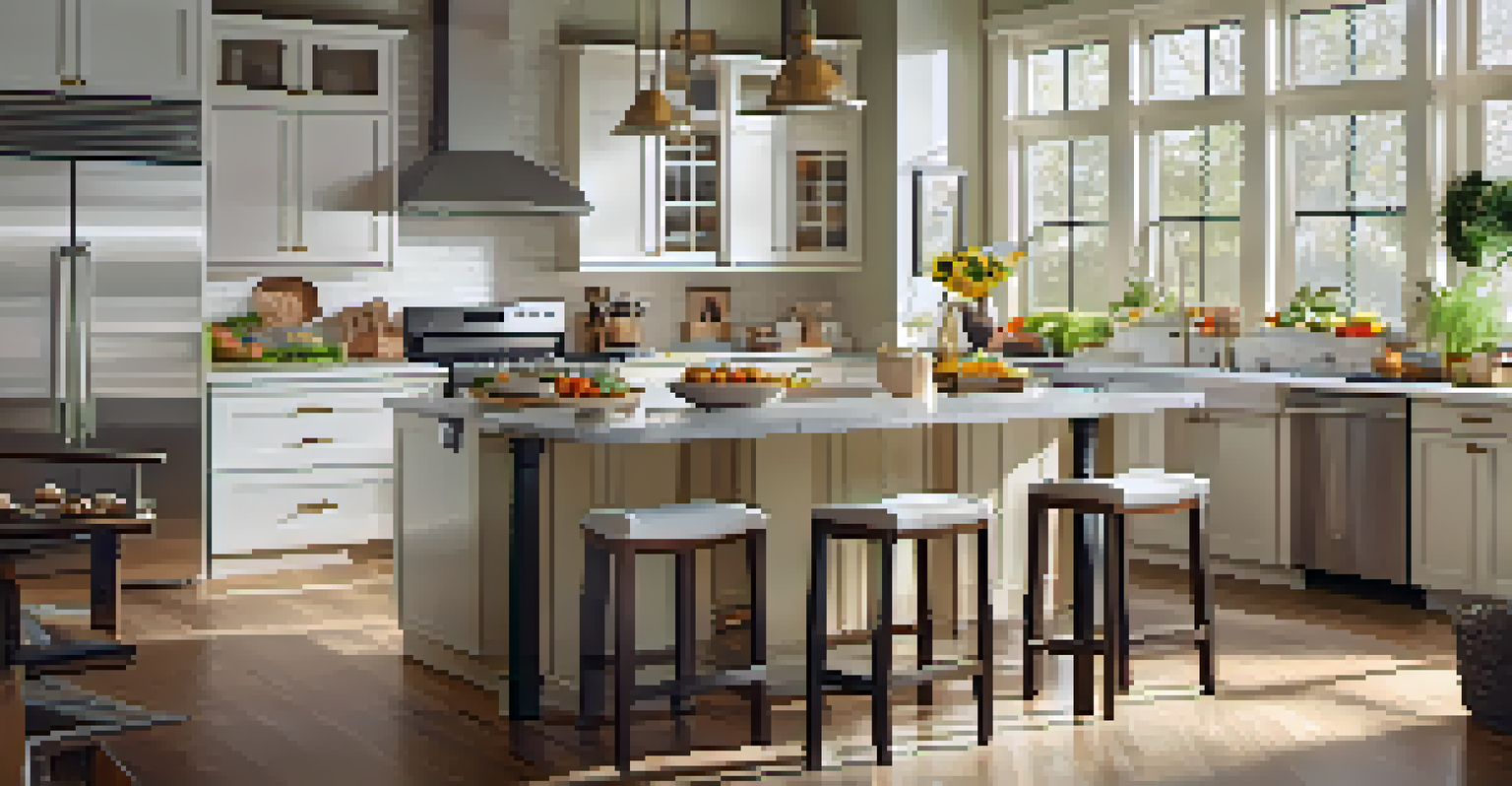Multi-Generational Living: Designing Homes for All Ages

Understanding Multi-Generational Living Trends
In recent years, multi-generational living has gained traction as families seek to strengthen bonds and share resources. This trend is not just about living under one roof; it’s about creating a supportive environment for all ages. With rising housing costs and an aging population, many families are finding that living together is a practical solution.
Family is not an important thing. It's everything.
Families today may include grandparents, parents, and children, each with unique needs and preferences. Understanding these dynamics is crucial to designing a home that works for everyone. This shared living arrangement can lead to emotional support, shared responsibilities, and a cohesive family structure.
As a result, architects and designers are increasingly tasked with creating homes that cater to diverse age groups. This means considering accessibility features, communal spaces, and private areas that allow for both togetherness and personal space.
Designing Functional Spaces for Everyone
When designing a home for multiple generations, functionality is key. Each space should serve multiple purposes to accommodate various needs. For example, a living room can double as a play area for children while still being a cozy spot for grandparents to relax.

Open floor plans often work well because they promote interaction and allow for easy supervision of younger family members. However, it’s also important to incorporate designated areas that offer privacy when needed, such as a quiet reading nook or a separate suite for grandparents.
Benefits of Multi-Generational Living
Living together enhances emotional support and strengthens family bonds across generations.
Moreover, incorporating flexible furniture that can adapt to different activities is essential. Pieces that can be easily rearranged or serve multiple functions help maximize space and ensure comfort for all ages.
Incorporating Accessibility Features
Accessibility is a critical component of multi-generational home design. Homes should include features that make it easy for everyone, from toddlers to the elderly, to move around safely. This can include wider doorways, ramps instead of stairs, and lever handles for doors.
The love of family and the admiration of friends are much more important than wealth and privilege.
Bathroom design should also prioritize accessibility, offering features like walk-in showers, grab bars, and non-slip flooring. These adaptations not only enhance safety but also promote independence for older adults, allowing them to maintain their dignity while living at home.
Incorporating smart home technology can further enhance accessibility. Voice-activated systems, automated lighting, and temperature controls can assist family members with mobility challenges, making everyday tasks easier and more manageable.
Creating Communal Spaces for Interaction
Communal spaces are the heart of any multi-generational home. These areas encourage family interaction, fostering relationships and creating lasting memories. Consider designing a large, inviting kitchen where everyone can gather to cook and enjoy meals together.
A backyard or patio can serve as an outdoor extension of the home, ideal for family barbecues or simply relaxing in the sun. Incorporating elements like a fire pit or seating area can enhance the outdoor experience, making it a perfect space for storytelling and bonding.
Designing for All Ages
Homes should incorporate functional spaces that accommodate the diverse needs of different age groups.
Additionally, having a family game room or media room can provide fun activities for all ages. These communal spaces should be designed with comfort and accessibility in mind, allowing family members to easily enjoy each other's company.
Balancing Privacy and Togetherness
While communal spaces are vital, maintaining a balance between togetherness and privacy is equally important. Each generation has different needs for solitude and personal space. Designing private areas for each family member helps ensure that everyone feels comfortable and respected.
Consider incorporating separate suites or in-law apartments that provide autonomy for older generations. These spaces can include a small kitchenette and bathroom, giving them the independence they desire while still being close to family.
For younger generations, dedicated study areas or quiet rooms can help them focus on schoolwork or hobbies. Ensuring that private spaces are well-designed and accessible promotes a harmonious living environment.
Sustainable Design Considerations
Sustainability is an important factor in modern home design, and it becomes even more critical in multi-generational living. Families can benefit from energy-efficient appliances and sustainable building materials that reduce overall costs and environmental impact. This could mean installing solar panels or using recycled materials in construction.
By implementing eco-friendly practices, families not only save money but also demonstrate a commitment to future generations. Teaching children about sustainability while living in an environmentally conscious home can instill values that they carry into adulthood.
Creating Communal and Private Spaces
Balancing communal areas with private spaces ensures comfort and respect for each family member's needs.
Additionally, creating outdoor gardens or green spaces can encourage family members to engage with nature. These areas can serve as both a food source and a shared hobby, promoting healthy eating habits and family bonding.
The Emotional Benefits of Multi-Generational Living
Beyond the physical aspects of design, multi-generational living offers significant emotional benefits. Living with family members fosters a strong support system, reducing feelings of loneliness and isolation, particularly among older adults. This close-knit environment can enhance mental well-being for everyone involved.
Children growing up in multi-generational homes often develop deeper relationships with their grandparents and learn valuable life skills. These experiences can lead to a greater sense of empathy and understanding of different age groups, helping to bridge generational gaps.

Moreover, the shared responsibilities of household chores and caregiving can alleviate stress for all family members. When everyone contributes, it creates a sense of teamwork and strengthens family bonds.